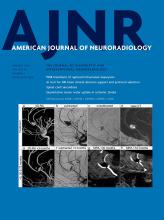In the commentary “MRI Monitoring of Anti-Alzheimer Therapy Amyloid-Related Imaging Abnormalities: Due Diligence or Overkill?” Høilund-Carlsen et al provide their viewpoint on the efficacy of monoclonal antibody therapies (mAbs) targeting beta-amyloid and the appropriate imaging for treatment monitoring and assessment of outcomes. Drug efficacy and drug safety have been assessed via multiple metrics in clinical trials of anti-amyloid therapies. Assessment of drug efficacy is a matter of clinical trial design, which we did not address in our review.1 Amyloid-related imaging abnormalities (ARIA) are one of the many safety metrics assessed and used to determine eligibility for continued dosing; their presence may require temporary suspension or permanent discontinuation of drug dosing.2
Regarding the appropriate imaging assessment of patients undergoing therapy, we limited the scope of our review to MR imaging assessment of patients before and during anti-amyloid mAb therapy. We did not address the role of PET in clinical trials or the potential role of PET in clinical practice. Further discussion of PET is warranted and may include amyloid PET for pre- or posttreatment evaluation, as has been used in clinical trials, and FDG-PET for assessment of functional outcomes, as proposed by Høilund-Carlsen et al. In the future, it may be helpful for individuals designing clinical trials to consider functional elements in the imaging assessment of patients before and during mAbs therapy. When mAbs targeting beta-amyloid become clinically available, it will be important for the community to consider the expanded use of PET in addition to MR for imaging assessment.
References
- © 2023 by American Journal of Neuroradiology












